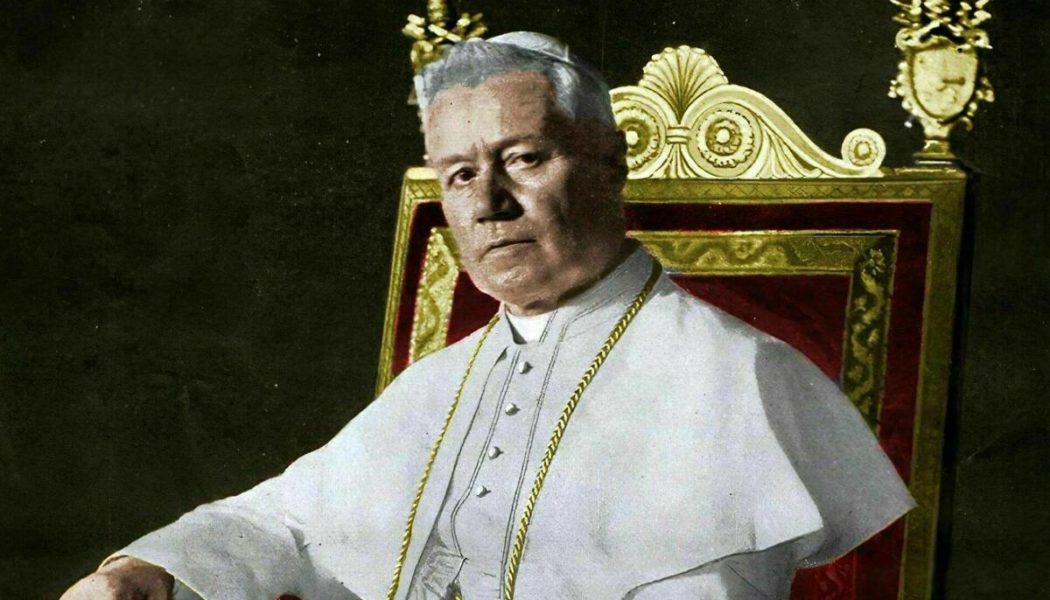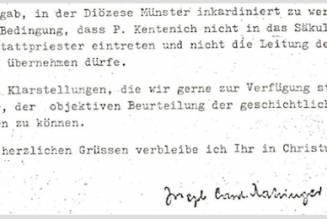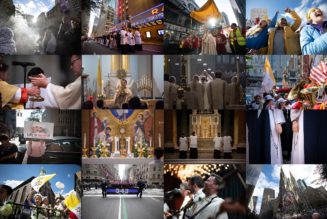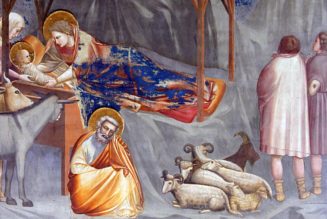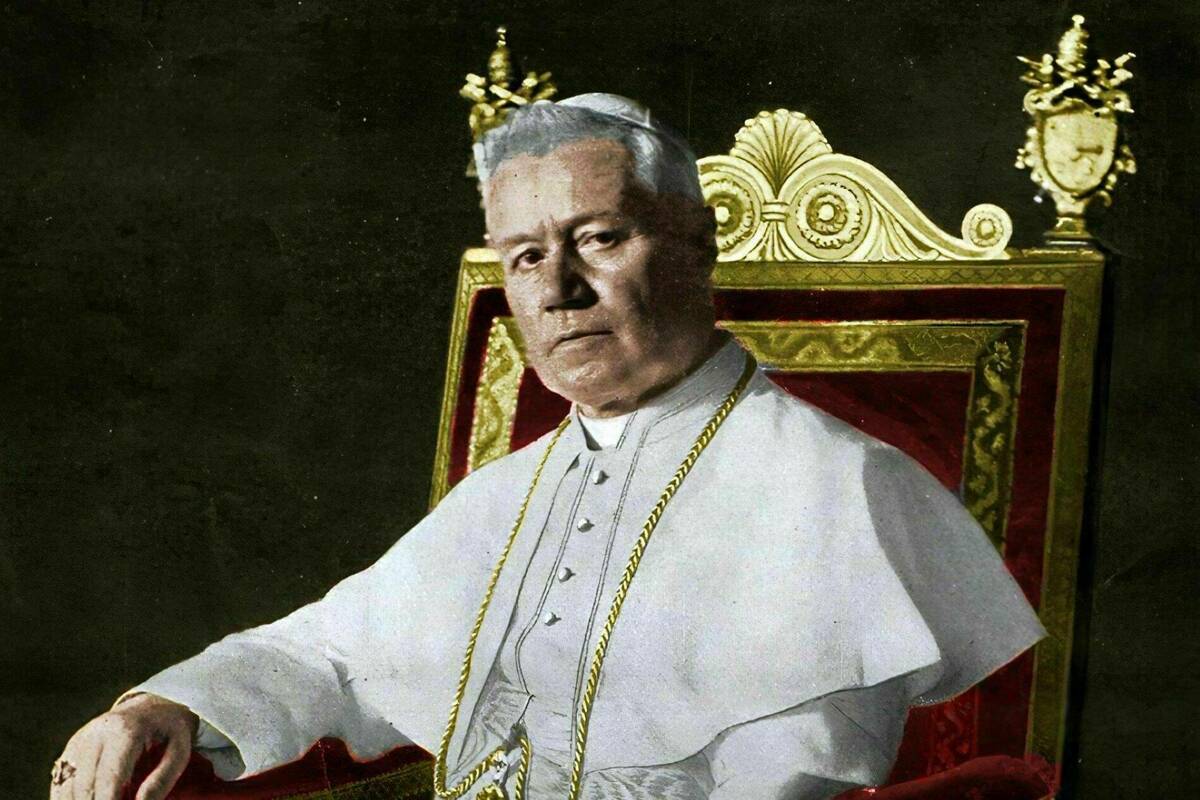
Josephine Hope-Scott Ward (1864–1932) wrote at the crossroads of the implementation of Catholic Emancipation in England—particularly the Universities Tests Acts of 1871—and the Catholic Modernist Crisis (1893–1914). The author of ten novels, a novella, and numerous articles and personal writings, Josephine Ward’s body of work provides a unique look into how the modernist controversy was experienced by English Catholics in the first decade of the twentieth century.
Josephine Ward was the niece of the Duke of Norfolk, which demonstrates her ties to Recusant England. She was also the daughter of the Tractarian and Oxford convert, James Robert Hope-Scott (1812–1872). In 1887, Josephine married Wilfrid Ward (1856–1916), who was the son of the notable Oxford convert, William George Ward (1812–1882). Formed by the English Catholic intelligentsia, Josephine and Wilfrid would become two of the most influential Catholic voices in England at the time of the modernist controversy. Though nearly all of Josephine’s writings have fallen out of print and all but disappeared from the historical record, her voice is essential for an understanding of the social and religious implications of the modernist crisis in England in particular, but also in the greater Anglophone sphere. This is particularly true of her novel, Out of Due Time.
The Modernist Crisis in a Nutshell
The Roman Catholic Modernist Controversy is typically dated from Pius X’s promulgation of Providentissimus Deus (On the Study of Holy Scripture) in 1893 to the death of Pope Pius X and/or the beginning of the First World War, both of which occurred in 1914.[1] The modernist controversy hit its peak in 1907 with the publication of Lamentabili Sane (the Syllabus Condemning the Errors of the Modernists) and the subsequent release of Pascendi Dominici Gregis (On the Doctrines of the Modernists) on 8 September 1907.
While the modernist crisis cannot be considered a unified movement—such as the Oxford Movement, for example—there is a set of questions that defines the crisis and frames the subsequent Catholic theology.
Neo-Scholasticism
In 1879, Pope Leo XIII introduced neo-Scholasticism as a solution for the political crises of the nineteenth century. Those accused of modernism would unite in their conviction that the overly-intellectualist propositionalism was inadequate to the theological needs of the time, most prevalently here being the “Victorian Crisis of Belief,” which saw the rise of science as a direct challenge to faith in God. Richard Helmstadter describes this Victorian Crisis as,
An intellectual and emotional upheaval, stemming from challenges to the historicity of the Bible, discoveries in geology and biology, and concerns about morality, or rather the lack of it, in nature. Science and religion, more precisely science and theology, were deemed to be “in conflict,” the battle lines clearly drawn.[2]
“Now our science tells our faith that she is shameful,” writes William James, “and our Hopes that they are dupes; our Reverence for truth leads to conclusions that make all reverence falsehood.”[3] The pathos of this era is epitomized in Matthew Arnold’s “Dover Beach”:
The Sea of Faith
Was once, too, at the full, and round earth’s shore
Lay like the folds of a bright girdle furled.
But now I only hear
Its melancholy, long, withdrawing roar,
Retreating, to the breath
Of the night-wind, down the vast edges drear
And naked shingles of the world.
For those reeling from this Victorian Crisis, the idea of religious truth treated thematically in an intellectualist manner and mediated propositionally was becoming less and less plausible.
Science
The introduction of a developmental or evolutionary paradigm in the nineteenth century replaced the eighteenth-century emphasis on the classification of facts. Taxonomies in the nineteenth century were run through time. This rise in historical consciousness effected the interplay between theology and science. For example, Geologist Charles Lyell argues that the age of the earth challenges the way Genesis was typically read at the time. Similarly, the findings of Darwin in 1859 posed challenges to both teleology and the reading of Genesis 1–3. Social Darwinism was also introduced alongside the seemingly random nature of natural selection.
Theologically, what is true in science seems to be at odds with what is true of divine revelation. In other words, the very idea of the nature of divine revelation itself was at stake.
History
In keeping with the idea of the rise of running everything through time, there arose a concern for the historical mediation of truth (divine revelation). Questions stirred, such as: do propositions develop? Is there a stability behind propositions?
Ancient Near Eastern Studies became popular, and archaeological digs of ancient Mesopotamia became popular. The Epic of Gilgamesh and the Enuma Elish were discovered in 1849 by archaeologist Austen Henry Layard, for example.
We see the rise of critical texts of scripture and the beginnings of the historical critical method. Scripture scholars began asking questions as to whether scripture could be historicized and studied in terms of its sources as we might study any other book, and if so, can it still be considered scripture? After the rise of historical criticism, questions remained as to whether figural readings of scripture are still valid. Bremond poses questions about whether we need to abolish Christmas, for example.
Discussions about the Church’s history are equally neuralgic for Catholics. How do we understand the nature of doctrinal development?
Again, as was the case for the rise of the scientific method, the rise of historical consciousness in the nineteenth century called into question the very idea of the nature of divine revelation in the early twentieth century.
The Mystical Element
The questions introduced with the scientific and historical methods led to questions about what William James ambiguously deemed “religious experience” in 1902. This is the idea that if there is religious truth (i.e. divine revelation), then it must be human subjects located in historical contexts who believe in it.
We see an engagement with modern post-Kantian philosophy after the turn to the subject. Maurice Blondel (1861–1949) and Lucien Laberthonnière (1860–1932) engage the idea that if there is truth, it is subjects who know it, but how do they do that? Does the way that subjects know divine truth make it possible for us to know God? What is the role of the subconscious? Can psychology reductively explain religious experience or even shed light on it?
If the understanding of divine revelation is destroyed, one of the first and most common moves is to make it into a symbol that is part (typically the best part) of a larger vision of “religion” through world history. We see this in Alfred Loisy (1856–1940), for example. In order to avoid the mistake of making religion into simply an overly symbolic thing we study, authors began to reach back into the pre-Reformation and early modern tradition of the Church to find more adequate categories for talking about how people have experienced or known God in ways that are not primarily intellectual.
This emphasis on the mystical leaves one with the question of how to avoid subjectivism. Pascendi, for example, poses the question: “Is there a God outside myself into whose hands I must one day fall?”
Most importantly for the “modernists,” the question was how can divine revelation be understood within the paradigm of immanent transcendence?
William L. Portier describes the modernist crisis as ripping “through Catholic intellectual life like a tragic storm.” Continuing, Portier writes,
But its havoc cut to a level deeper than the merely intellectual. Pascendi forced people to take sides. Agonized personal decisions put colleagues at odds and set friend against friend. Censured priest questioned fellow clergy or pious laymen who escaped censure. Subsequent historical and autobiographical writing apportioned the inevitable praise and blame.[4]
The Modernist Controversy has often been studied through the lens of its key figures—Tyrrell, Loisy, Hébert, Houtin, Sabatier, von Hügel, Bremond, to name a few—and their anti-modernist counterparts—Garrigou-Lagrange, Merry del Val, Pius X, etc. What can be lost in only viewing the crisis solely through the extremities and the particularities of those condemned is a sense of how the crisis spilled into the lives of others not at the epicenter. Josephine and her husband, Wilfrid, were conversant with tenants of both modernism and anti-modernism. Of course they did not want to be censored or condemned for their writings, but they also felt that the Church was lacking in her relationship with the modern world. Their writings, both personal and published, reflect the tumult felt within the Catholic landscape described here. While it is important to study the central figures and tenants of movements and crises, it is also important to take a step back and try to view the ripple effects of the crisis to the wider Church. Josephine Ward helps us to gain a better understanding of these currents.
Josephine Ward, Modernism, and Anti-modernism
In her biography of her parents, Maisie Ward writes that her mother disliked the culture surrounding modernism, particularly its “criticism and irreverence that were constantly breaking out in conversation.”[5] She notes that her mother saw the modernists as “a mutual admiration society living in a very small room,” and that “she [Josephine] wanted to throw open a few windows and let some air in to relieve the stuffy atmosphere.”[6] Maisie’s insight into her mother’s opinion of the modernist culture is interesting because the idea of a stuffy intellectualism is typically reserved for the anti-modernists in our contemporary historiography.[7] In her review of Maude Petre’s Modernism, Josephine writes,
“There are many dusty corners in every old building,” said a wit of the day, “but it is not necessary to wave your duster out of the window as a flag of revolt.” “Modernism was a spirit, a tone, a temper of mind,” was said to me recently by a non-Catholic thinker. That spirit, tone, and temper had become unmistakably mutinous. This latest review of the movement clearly provides that the rioters were threatening the most treasured truths, and the Encyclical Pascendi was the riot act that was read to the mutineers.[8]
Josephine and her husband were caught between the Scylla and Charybdis of the prevailing propositionalist neo-Scholastic orthodoxy and the scientifically minded, but often irreverent, modernism. This catch-22 in which the Wards found themselves is described beautifully throughout Josephine’s novel, Out of Due Time.
Out of Due Time
“The expression of a conviction reached through an experience intimate and personal,” one reviewer described the somewhat autobiographical novel as “the defense of the Church against the accusation that she is intolerant of intellectual freedom and progress, that she silences the thinker and persecutes the reformer.”[9] Out of Due Time is the story of Elizabeth Fairfax, called “Lisa,” a young Englishwoman who becomes acquainted with the Count Paul D’Etranges and his sister Marcelle, and George Sutcliffe.
Paul D’Estranges represents the more radical wing of the modernists. Paul publishes an article entitled, “The Old Catholicism and the New,” which was based on a lecture he gave at a scientific congress, “but divested of the prudent reservation that clothed his speech.”[10] This article treated existing theology “with sheer contempt,” and ignored “the value of authority even as a breakwater, as a witness to the older and deeper truths, a witness to the principle of stability.”[11] For Paul, “The Catholicism of the future was to be formed, not by the interaction of the old truths and new, but simply by the personal opinions of Paul and his friends, of those who professed, indeed, to be Catholics, but whose views were almost exclusively determined and fashioned by the peculiar tendencies of the present age.”[12] Paul would eventually be condemned for not retracting the paper, with his sister following him into obscurity.
Sutcliffe, described as “a Catholic . . . indeed in the true English style,” is the voice of moderation in this narrative.[13] For Sutcliffe, “the Church cannot triumph unless it assimilates modern science, and keeps its hold on the people. It must be scientific and democratic.”[14] The protagonist and narrator, Lisa, was initially betrothed to Paul, though in the end she ended up marrying George because she could not give up her faith. In the end, moderation won the day.
It is important to note that this novel was published prior to the Syllabus of Errors and Pascendi. Ward’s Out of Due Time captures the human element of the controversy. It was not simply intellectual argumentation that ceased with the ending of a meeting; people’s lives were at stake. To be condemned a “Modernist” was to be rejected from the life of the Church. To many, it was experienced as a sort of death. What this novel demonstrates through these characters is that many of those condemned as Modernists, such as Paul D’Estranges, were not seeking a life outside of the faith. These were deeply faithful people who were attempting to bring sense into a Church that was seemingly dying under the weight of the prevailing neo-Scholasticism of the day.
Conclusion
The influence of Josephine Ward is described nicely in the Catholic World’s 1906 review of Out of Due Time. It reads:
By her former work, One Poor Scruple, Mrs. Wilfrid Ward secured for herself a high place among living novelists. The wide success and high appreciation that it won proved that a religious novel, extolling Catholic ideals, when written with ability, truthfulness, and a knowledge of life, could command the favorable attention of non-Catholics, and might be a very efficient exposition and winning defense of Catholic truth, securing attention in quarters, closed, and guarded by the twin sentinels of prejudice and contemptuous indifference, against any literature making a formal plea for Catholicism.[15]
Studying the literary output of Catholic authors’ writing about Catholic themes during the Modernist Crisis can be quite enlightening. On the one hand it demonstrates, at least to some extent, how Josephine (or any author doing a similar task) understood and critiqued various aspects of the crisis. On the other hand, it also demonstrates how the crisis was being translated and disseminated to those potentially unaware of it. For example, the readers of the novel Out of Due Time encounter many of the tensions felt in the actual crisis, even though they may not know the drama playing out in real life. This is one way in which the Modernist Crisis becomes a crisis of the whole Church, and not just a quibble between a few eccentric academics and Vatican officials of the early twentieth century.
In recent years there has been an increase in scholarship devoted to reintroducing important Catholic women’s voices back into the historical and literary records. I was delighted to see Word on Fire’s recent edited volume, Women of the Catholic Imagination: Twelve Inspired Novelists You Should Know, and the Catholic Women Writers series from the Catholic University of America Press is publishing excellent selections.
[1] Much of this summary is derived from lecture notes provided by William Portier in his doctoral seminar on the modernist crisis taught at the University of Dayton.
[3] William James, “Clifford’s ‘Lectures and Essays,’” Collected Essays and Review (London: Russell and Russell, 1920), 140.
[4] William L. Portier, Divided Friends: Portraits of the Roman Catholic Modernist Crisis in the United States (Washington, DC: Catholic University of America Press, 2013), 4–5.
[5] Maisie Ward, The Wilfrid Wards and the Transition, vol. II: Insurrection versus Resurrection (New York: Sheed & Ward, 1937), 190–91.
[6] Ward, The Wilfrid Wards and the Transition, v. 2, 190–91.
[7] See Peter Erb, “Some Aspects of Modern British Catholic Literature: Apologetic in the Novels of Josephine Ward,” British Catholic History 24, no. 3 (May 1999): 364–83.
[8] Ward, The Wilfrid Wards and the Transition, v. 2, 558.
[9] New York Times Book Review (26 May 1906).
[10] James J. Fox, “Mrs. Wilfrid Ward’s New Novel,” Catholic World: A Monthly Eclectic Magazine of General Literature 83 (1906): 386.
[11] Ward, Out of Due Time (London, Longmans, Green, and Co., 1906), 188.
[12] Fox, “Mrs. Wilfrid Ward’s New Novel,” 386; see Ward, Out of Due Time, 188.
[13] Ward, Out of Due Time, 43.
[14] Ward, Out of Due Time, 40.
[15] Fox, “Mrs. Wilfrid Ward’s New Novel,” 382.
